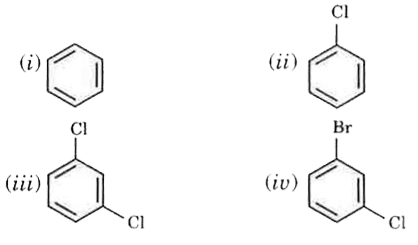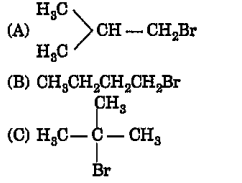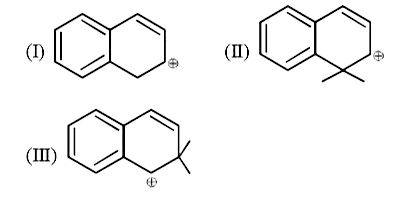Arrange the following substances in the increasing order of force of attraction between their particles :
Salt, water , nitrogen
To arrange the substances (salt, water, and nitrogen) in the increasing order of the force of attraction between their particles, we need to consider the physical states of these substances and the nature of the forces acting between their particles.
1. Identify the Physical States:
- Salt: Salt is a solid at room temperature.
- Water: Water is a liquid at room temperature.
- Nitrogen: Nitrogen is a gas at room temperature.
2. Understand the Forces of Attraction:
- In solids, the particles are closely packed and have strong forces of attraction between them. This results in a definite shape and volume.
- In liquids, the particles are still close together but can move past one another, resulting in weaker forces of attraction compared to solids.
- In gases, the particles are far apart and move freely, which means the forces of attraction between them are very weak.
3. Rank the Substances:
- Nitrogen (Gas): Weakest forces of attraction.
- Water (Liquid): Intermediate forces of attraction.
- Salt (Solid): Strongest forces of attraction.
4. Final Arrangement:
- Therefore, the increasing order of the force of attraction between the particles is:
- Nitrogen < Water < Salt
Final Answer:
Nitrogen < Water < Salt
- Salt: Salt is a solid at room temperature.
- Water: Water is a liquid at room temperature.
- Nitrogen: Nitrogen is a gas at room temperature.
- In solids, the particles are closely packed and have strong forces of attraction between them. This results in a definite shape and volume.
- In liquids, the particles are still close together but can move past one another, resulting in weaker forces of attraction compared to solids.
- In gases, the particles are far apart and move freely, which means the forces of attraction between them are very weak.
- Nitrogen (Gas): Weakest forces of attraction.
- Water (Liquid): Intermediate forces of attraction.
- Salt (Solid): Strongest forces of attraction.
- Therefore, the increasing order of the force of attraction between the particles is:
- Nitrogen < Water < Salt
Nitrogen < Water < Salt
Topper's Solved these Questions
- BOOK - MTG IIT JEE FOUNDATIONCHAPTER - FOOTSTEPS TOWARDS(CBSE BOARD)EXERCISE - SECTION-B11videos
FOOTSTEPS TOWARDS(CBSE BOARD)
- BOOK - MTG IIT JEE FOUNDATIONCHAPTER - FOOTSTEPS TOWARDS(CBSE BOARD)EXERCISE - SECTION-C15videos
FOOTSTEPS TOWARDS(CBSE BOARD)
- BOOK - MTG IIT JEE FOUNDATIONCHAPTER - FOOTSTEPS TOWARDS (NEET)EXERCISE - QUESTIONS44videos
FOOTSTEPS TOWARDS (NEET)
- BOOK - MTG IIT JEE FOUNDATIONCHAPTER - IS MATTER AROUND US PURE ?EXERCISE - OLYMPIAD/ HOTS CORNER20videos
IS MATTER AROUND US PURE ?
Similar Questions
Knowledge Check
- Question 1 - Select One
Arrange the following in the increasing order of their bond order:
AO2,O+2,O−2andO2−2BO2−2,O−2,O2,O+2CO+2,O2,O−2,O2−2DO2,O+2,O−2,O2−2 - Question 2 - Select One
Arrange the following comounds in the increasing order densities.
 A(i)<(ii)<(iii)<(iv)B(i)<(iii)<(iv)<(ii)C(iv)<(iii)<(ii)<(i)D(ii)<(iv)<(iii)<(i)
A(i)<(ii)<(iii)<(iv)B(i)<(iii)<(iv)<(ii)C(iv)<(iii)<(ii)<(i)D(ii)<(iv)<(iii)<(i) - Question 3 - Select One
Arrange the following compounds in the increasing order of their densities
 A(i)<(ii)<(iii)<(iv)B(i)<(iii)<(iv)<(ii)C(iv)<(iii)<(ii)<(i)D(ii)<(iv)<(iii)<(i)
A(i)<(ii)<(iii)<(iv)B(i)<(iii)<(iv)<(ii)C(iv)<(iii)<(ii)<(i)D(ii)<(iv)<(iii)<(i)
Arrange the following bases in increasing order of their basic strength
NH4OH,NaOH,Mg(OH)2,AI(OH)3View SolutionArrange the following compounds in the increasing order of their densities
 View Solution
View SolutionArrange the following compounds in increasing order of their boiling
 View Solution
View SolutionArrange the following carbanions in increasing order of stability:
 View Solution
View SolutionArrange the following carbocations in the increasing order of their stability.
 View Solution
View Solution

